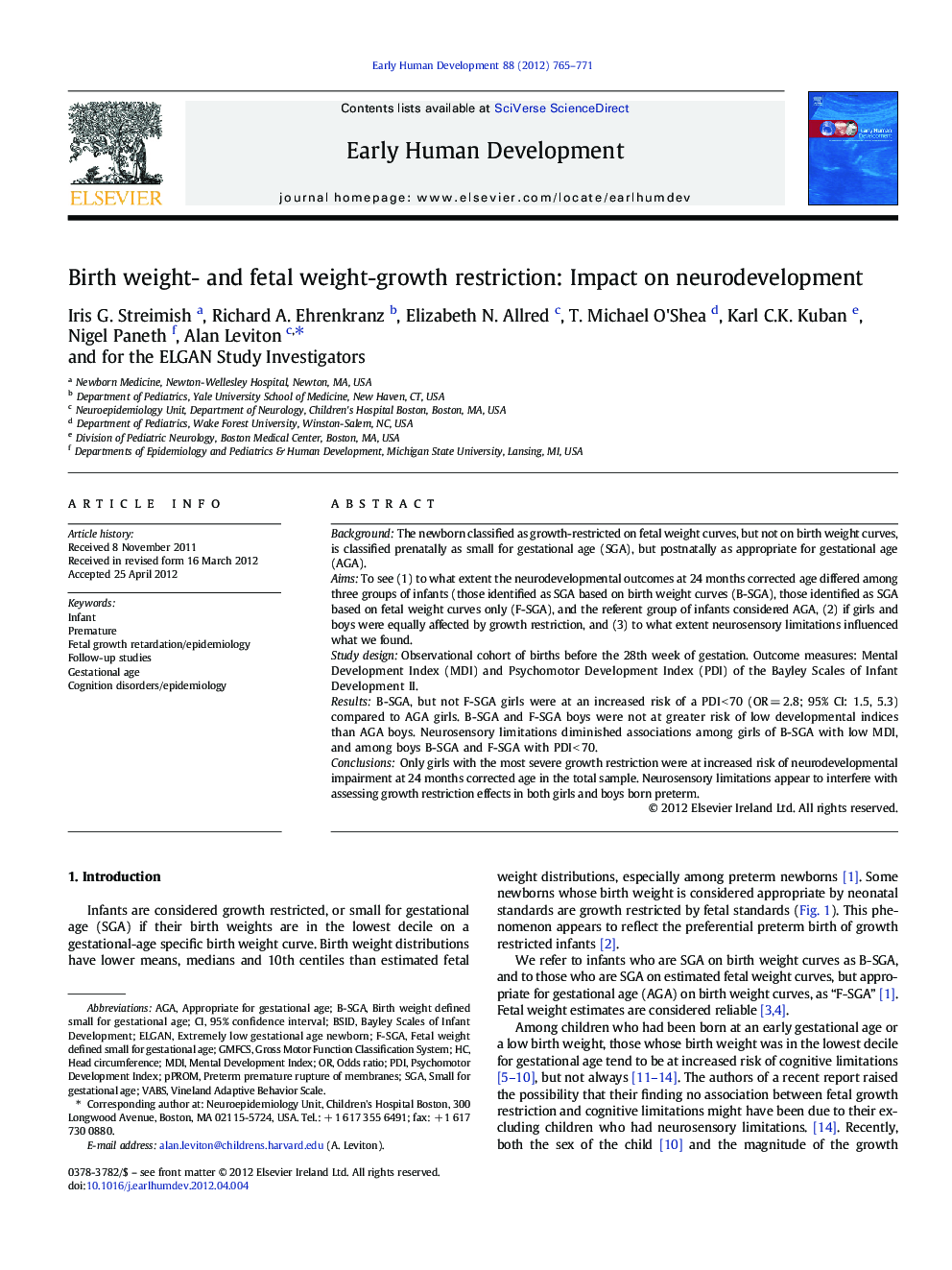| Article ID | Journal | Published Year | Pages | File Type |
|---|---|---|---|---|
| 6172051 | Early Human Development | 2012 | 7 Pages |
BackgroundThe newborn classified as growth-restricted on fetal weight curves, but not on birth weight curves, is classified prenatally as small for gestational age (SGA), but postnatally as appropriate for gestational age (AGA).AimsTo see (1) to what extent the neurodevelopmental outcomes at 24Â months corrected age differed among three groups of infants (those identified as SGA based on birth weight curves (B-SGA), those identified as SGA based on fetal weight curves only (F-SGA), and the referent group of infants considered AGA, (2) if girls and boys were equally affected by growth restriction, and (3) to what extent neurosensory limitations influenced what we found.Study designObservational cohort of births before the 28th week of gestation. Outcome measures: Mental Development Index (MDI) and Psychomotor Development Index (PDI) of the Bayley Scales of Infant Development II.ResultsB-SGA, but not F-SGA girls were at an increased risk of a PDIÂ <Â 70 (ORÂ =Â 2.8; 95% CI: 1.5, 5.3) compared to AGA girls. B-SGA and F-SGA boys were not at greater risk of low developmental indices than AGA boys. Neurosensory limitations diminished associations among girls of B-SGA with low MDI, and among boys B-SGA and F-SGA with PDIÂ <Â 70.ConclusionsOnly girls with the most severe growth restriction were at increased risk of neurodevelopmental impairment at 24Â months corrected age in the total sample. Neurosensory limitations appear to interfere with assessing growth restriction effects in both girls and boys born preterm.
